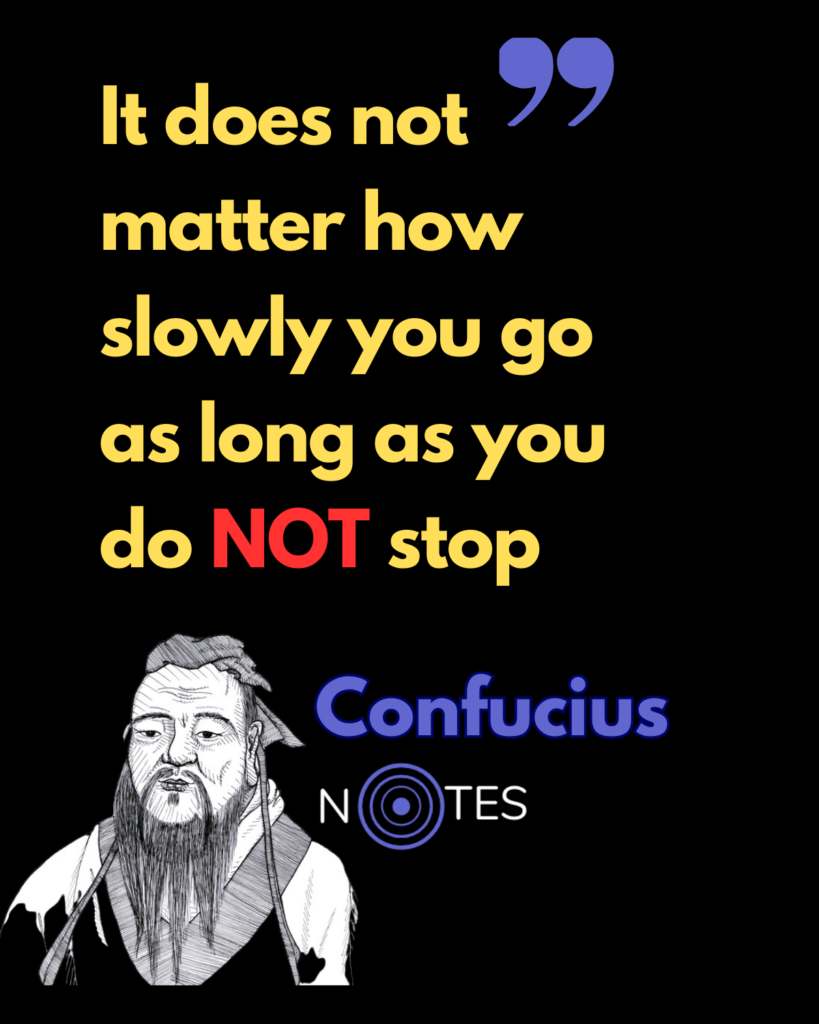Finding Your Dream Job with Ease – A Practical Guide to Career Success and Fulfillment
Your Daily Dose of Interdisciplinary Insights
In today’s dynamic job market, securing the ideal position that aligns with your skills, passion, and career ambitions can be a challenging journey. However, its conclusion should be rewarding, fulfilling your deepest aspirations, desires, and objectives. Drawing from my experience of transitioning through various jobs and practical roles in my professional life, I have gained firsthand insight into the numerous challenges encountered by individuals seeking a job that matches their academic qualifications and functional expertise. This article is designed to provide a detailed guide, focusing on essential steps to initiate your search for a job that truly suits you.

Self-Understanding: A Key to Job Search Success
The initial phase of your job search begins with introspection. It is imperative to delve deeply into your identity and clarify precisely what you seek in a job. Knowing your destination is essential before embarking on this journey; otherwise, you may find yourself aimlessly wandering, ending up lost. Therefore, self-assessment is vital in identifying your strengths, weaknesses, interests, and professional ambitions.
In this initial phase of self-discovery, it is crucial to identify your strengths and weaknesses and strive to understand them thoroughly. They serve as the primary compass in charting your career path. Evaluating personal strengths and weaknesses is a critical aspect of both personal and professional growth. This process entails deep introspection of innate talents, skills, behaviors, and characteristics. Strengths often emerge from individual interests, experiences, and continuous practice, reflecting areas of excellence and passion.

Conversely, weaknesses may originate from limited experience, ineffective strategies, or self-limiting beliefs. Recognizing these aspects enables individuals to leverage their strengths while fully acknowledging and managing their weaknesses. The aim is to develop a balanced self-awareness that informs life and career choices, fostering personal growth and effectiveness. Moreover, assessing strengths and weaknesses is essential for both personal and professional development.
To pinpoint your strengths:
- Reflect on activities where you excel and find enjoyment.
- Consider frequent compliments or tasks where you feel most confident – these often indicate your strengths.
- For weaknesses, identify areas of struggle or lower confidence.
Seeking feedback from others can also offer valuable insights for improvement. Striking a balance is crucial: capitalize on your strengths while acknowledging and addressing your weaknesses. This assessment should be dynamic and revisited regularly as you evolve and enhance your skill set.
Utilizing self-reflection techniques is beneficial for a thorough assessment, ensuring focus on unique abilities and areas needing enhancement. This approach boosts potential and paves the way for a more satisfying and successful personal and professional journey.
How to Tap into Your Awareness | Yongey Mingyur Rinpoche | TED
Websites like IQ Matrix provide insights on recognizing and transforming weaknesses into strengths. Moreover, understanding your skills and interests can guide you towards the most suitable industries and roles. Tools like the O*NET Interest Profiler and resources from institutions like Johns Hopkins University offer valuable self-assessment methods, helping you align your strengths and interests with potential career paths.
Researching Industries and Specialization Fields
After gaining clarity on your skills and interests, the next crucial step is identifying industries and sectors where you can thrive and which align with your unique qualifications. This task involves assessing the growth potential in various sectors, work-life balance considerations, and differing company cultures.
For instance, platforms like Burnout Bear provide insights into how aligning your skills and interests with an appropriate industry can ward off burnout and elevate job satisfaction. Similarly, services like Vati.io offer tools to explore job opportunities tailored to your skills and interests, aiding in effective career planning.

Furthermore, pinpointing the right industry that resonates with your skills and interests is critical to forging a fulfilling career and averting professional burnout. Have you considered whether your current industry aligns with your talents and passions? This evaluation begins with introspection: are your core skills and interests optimally utilized in your present role? Assessing your unique talents and desires is crucial to identify an industry that complements you.
But how do you find the perfect industry fit? Begin by investigating various sectors, understanding their dynamics, and evaluating how they correspond with your abilities. Ask yourself: Are there specific industries that pique your interest or align with your skills and values? Networking and establishing connections are instrumental in this exploration.
Could you engage with professionals in your preferred fields to gain insights? Informational interviews are often rich sources of valuable information.
Aligning your skills with industry requirements is another essential aspect. Do your abilities meet the demands of your chosen industry? If not, what additional training or education might bridge this gap? Cultural compatibility is also significant. Does the work culture in the sector resonate with your values and work-life balance preferences?
Remember, this exploration might involve some trial and error. Have you considered experimenting with different roles or industries to discover what suits you? Sometimes, the ideal industry for you might be one you’ve yet to consider.
In summary, finding the right industry demands a deep understanding of your skills and interests, comprehensive research, and, occasionally, the courage to venture beyond your comfort zone. By aligning your career with an industry that harmonizes with your skills and passions, you pave the way for enduring satisfaction and success.
Building a Foundation of Skills and Qualifications
Once you have navigated the challenging journey of determining your ideal industry and field, a pivotal question arises:
how can you enhance your skills and capabilities to match, excel, and stand out in this chosen field?
Identifying your skills and qualifications is a cornerstone of an effective job search and strategic career planning. As highlighted in Step 1, the process is initiated with a thorough self-assessment. This involves reflecting on your experiences to pinpoint your strengths and talents, encompassing hard and soft skills. Soliciting feedback from others can offer invaluable external perspectives on your abilities.

Equally important is assessing your interests, as it plays a crucial role in aligning your passions with potential career paths. Creating a skills inventory and researching industries that resonate with your skillset are integral steps in this journey. Exploring your passions, being receptive to new fields, and understanding how your personality traits correlate with work environments are all essential in identifying the right job for you.
Additionally, ensuring that your values align with your career choices, expanding your network, and gaining practical experience through internships or volunteer work can provide profound insights and enhance your qualifications.
Developing the requisite skills, setting clear career objectives, and formulating actionable steps toward these goals are also fundamental. It’s essential to maintain flexibility and be willing to adapt your plans as your interests and goals evolve.
Lastly, seeking advice from career counselors or mentors can offer invaluable support and direction on your career path.
Evaluating Skill-Building Steps for Career Success:
- Self-Assessment : Reflect on your experiences and skills, including technical abilities and soft skills like communication and teamwork.
- Feedback Gathering : Seek feedback from mentors, colleagues, and friends to gain insights into your strengths.
- Interest Assessment : Identify activities and topics that captivate you, which could indicate potential career paths.
- Skills Inventory : Compile a list of your skills, categorizing them into technical and soft skills, and illustrate how you apply them.
- Industry Matching : Research industries and roles that align with your skills and interests. Ensure your skills meet job requirements.
- Exploring Passions : Recognize hobbies and interests that invigorate you, as they may offer career opportunities.
- Curiosity and Continuous Learning : Remain open to new areas. Participate in workshops and seminars to uncover new interests.
- Personality Suitability : Understand how your personality traits correlate with various professions.
- Values Alignment : Consider careers that resonate with your core values and beliefs.
- Information Gathering : Utilize online resources to find jobs matching your skills and interests.
- Networking : Connect with experts in your fields of interest and gain insights through informational interviews.
- Real-life Experience : Engage in internships or volunteer work to practically test your interests and skills.
- Skills Enhancement : Identify areas for improvement and seek additional education or training.
- Setting Goals : Establish clear, attainable career objectives based on your skills and interests.
- Action Planning : Break down your goals into manageable steps, such as obtaining specific certifications or gaining relevant Experience.
- Adaptability: Stay flexible and ready to modify your career plan as you acquire new experiences and insights.
- Career Guidance : Consult with career advisors or mentors for enhanced direction in your career journey.
By adhering to these steps, you can effectively align your skills and interests with a rewarding career path, paving the way for sustained satisfaction and success. Remember, this dynamic and evolving process should adapt as you grow professionally.
Building Effective Public Relations Networks
Effective communication with others, whether in professional circles or public life, extends beyond professional gains. It embodies genuine curiosity and a willingness to assist others. Stanford University Graduate School of Business highlights the value of reaching out to weak ties and rekindling old connections, as these links can offer fresh perspectives and opportunities.
Professional networking and public relations are critical strategies for career advancement. They revolve around establishing and nurturing connections within your industry. It’s not merely about accumulating contacts but about forming meaningful relationships that offer support, share opportunities, and provide guidance. A successful network comprises trusted individuals relevant to your career path. Building such a network is a progressive endeavor, but its long-term benefits are invaluable, aiding in job discovery, knowledge exchange, and career support.

HubSpot‘s blog suggests preparing clear objectives and conversation starters for networking events. Cleverism also recommends managing your time effectively to engage in professional relationships constructively. Remember, communication should be mutually beneficial and approached with openness and proactivity.
Effective networking also demands a thoughtful approach. Allocating specific time for networking activities is crucial, ensuring regular and consistent engagement. Assisting others in your network is as important as seeking help and fostering a community of mutual support. Additionally, prioritize quality over quantity when expanding your network. Having fewer but stronger and more significant connections is more advantageous than many superficial ones.
Social media platforms are potent tools for networking, enabling connections with professionals globally. Joining alum groups or professional organizations can also offer valuable networking opportunities. Cultivating individual relationships is critical, as they often lead to more profound and personal professional connections.
Patience is not only the key to relief but also to effective networking. Building a robust network takes time, and the focus should be on forging genuine connections rather than rapidly expanding your contact list. A well-developed network unlocks new business opportunities and serves as a platform for idea exchange, seeking advice, and receiving unbiased perspectives on career-related challenges.
In conclusion, professional networking is a dynamic and ongoing process. It involves building strategic, mutually beneficial relationships, focusing on quality communications, and utilizing various platforms to maintain and expand your network. The ultimate goal is to cultivate a supportive professional community that fosters individual career growth and encourages collective knowledge sharing.
Job Search Process
We now arrive at the pivotal phase of the research journey: the job search itself, encompassing a multi-stage process. This involves crafting a tailored resume and cover letter, preparing for interviews, and actively seeking job opportunities. Once you’ve mastered the preceding stages, or at least gained a clear understanding of yourself, your chosen field, and the specialty where your talents shine brightest, you’re prepared to embark on your job hunt.
Effective Job Search Strategy
Engaging in a strategic job search is crucial in pursuing a fulfilling career. With an unwell-planned approach, the search can become haphazard and unhealthy, potentially leading to prolonged rejection and delay. To streamline this process, I recommend a series of practical strategic steps, each tailored to enhance your job search and boost your chances of securing your dream job. While each step warrants an in-depth explanation in its own right, here’s a brief overview to provide you with a foundational understanding.
- Developing an Online Presence:
Crafting a website or an “about me” page is crucial, regardless of your profession. Display your work, skills, and experience. Ensure your portfolio or page is user-friendly, searchable, and organized by industry or skill type.
- Anticipating Interview Questions:
Go beyond mere company research. Examine the job description and anticipate potential interview questions. Compile a mix of general and role-specific questions and prepare well-considered responses.
- Utilizing LinkedIn:
Leverage LinkedIn to showcase your professional experiences and insights. Regular activity can position you as an industry authority and open up opportunities. Engage actively in discussions and share relevant content.
- Clarifying Job Expectations:
Define what you seek in a job, including role type, industry, company culture, and work environment. This clarity streamlines the job search process, making it more targeted and effective.
- Networking Activity:
Expand your networking beyond conventional settings. Engage with professionals across different departments or online communities. Networking can lead to referrals, a key recruitment source for many firms.
- Direct Employer Contact:
Reach out to companies directly, circumventing job boards. Find hiring managers’ contact details and send personalized emails along with your resume and cover letter.
- Setting Goals and Rewarding Progress:
Segment your job search into specific, manageable tasks with set deadlines. Reward yourself upon completing each task to stay motivated.
- Considering Job Title Variations:
Research various job titles related to your desired role. This approach broadens the scope of potential job opportunities.
- Customizing Outreach Messages:
When contacting via email or LinkedIn, tailor your message to suit the specific company or role. Keep it brief, engaging, and with a clear call to action.
- Effective Self-Marketing:
Approach your job search like a personal marketing campaign. Identify your unique value proposition and target audience to enhance how you present yourself.
Additional Tips for a Successful Job Search:
- Apply for jobs between Tuesday and Thursday, avoiding weekends.
- January and February are typically prime months for job hunting.
- Prepare thoughtful questions for the HR manager during interviews.
- Continuously expand and engage with your LinkedIn network.
- Develop a concise pitch summarizing your professional identity.
- Utilize forums like Quora and Reddit for insights on specific companies.
- Always follow up after applications and request feedback.
- Practice patience, especially with long-term tactics like networking.
Job Search Tools:
- Free HubSpot Templates: Access templates for resignation letters, cover letters, and resumes tailored for various careers.
- Jobscan: Use the ATS checker to optimize your resume and boost visibility.
- Hunter.io: Locate verified email addresses of hiring managers to personalize your job applications.
Remember, a successful job search is about quality over quantity. Craft each application thoughtfully and treat every opportunity with dedication. By following these strategies, you can refine your approach and progress toward the ideal career opportunity.
Creating an Effective Resume: A Strategic Art
Crafting an effective resume is a fine art that blends strategic thinking, an acute understanding of your career trajectory, and insight into what employers seek. For recent graduates and mid-career professionals contemplating a career shift, your resume is the cornerstone of securing an interview.
The essence of a compelling resume lies in a lucid comprehension of the role you’re applying for and the attributes employers prioritize. This entails meticulous analysis of job descriptions and customizing your resume to underscore skills and experiences pertinent to the role. It goes beyond merely cataloging your work history; it’s about artfully presenting your achievements and competencies in a manner that aligns with a potential employer’s needs.
For those transitioning into a new field, transferable skills should be emphasized. Even if you have yet to work in the new domain, your rich experience is valuable. The key is to frame your previous experiences in a way that underscores your aptitude for the new role, highlighting how your distinct background offers innovative perspectives and solutions.
Conversely, new job seekers often need help with the challenge of limited professional experience. Yet, all experiences are significant. Academic projects, internships, volunteer work, and life experiences can all furnish your resume with compelling content. These experiences are a testament to soft skills like teamwork, problem-solving, and adaptability, which are universally prized across roles.
A resume should transcend a mere inventory of jobs and educational attainments; it should narrate your journey. Your story should interlace through your professional summary, skill sets, and work history, weaving a narrative that exhibits your evolution and achievements and their relevance to the role you aspire to.
In terms of structure, clarity, and readability are paramount. Shun clutter and employ distinct headings. Ensure your contact information is readily accessible and your career summary offers a succinct overview of your capabilities and goals. The skills section must align with the job description, incorporating relevant keywords. In the Experience section, utilize bullet points to delineate your roles and achievements, quantifying them where feasible.
A resume is not a static document. It should continually evolve with your career progression and vary with each job application. Regular updates, tailoring for specific roles, and maintaining a clean, professional format are vital for a resume that effectively opens doors.

In essence, a resume is your professional story, meticulously crafted for your audience (the employer) and the specific job role. It is a fusion of highlighting your past successes and how they are pertinent to the future you envision in your career path.
Crafting a Standout Cover Letter in the Digital Age
In today’s digital landscape, a standout cover letter remains a pivotal element of job applications. Far from being a mere formality, it serves as a personal introduction to potential employers, allowing you to articulate why you are the ideal candidate for the job. Unlike a resume, a cover letter offers the opportunity to showcase your personality and express enthusiasm for the role.
Essential Components of a Cover Letter:
- Standard Format: Begin with the essentials. Include your contact information, the date, and the employer’s details. Personalize the greeting with the hiring manager’s name whenever possible, demonstrating attention to detail and a personal touch.
- Engaging Opening: The initial paragraph should captivate the hiring manager’s attention. Emphasize your unique contributions to the role, focusing on your skills and passion for the industry. A compelling introduction sets the tone for the remainder of the letter.
- Informative Body: Here lies your chance to truly stand out. Provide specific examples from your past experiences to demonstrate how your skills align with the job requirements. This section should go beyond summarizing your resume; it’s an opportunity to narrate your professional journey and highlight your achievements with concrete examples.
- Company Insights: Illustrate your thorough research on the company. Mention something distinctive about the organization that resonates with you, and describe how your skills and experiences can contribute to its mission and objectives.
- Confident Conclusion: Conclude assertively. Propose the next steps, such as an interview, and express your appreciation for the chance to apply. This segment should reaffirm your interest and remind the employer of your potential value to their team.
Crafting Your Application Letter
While each cover letter should be customized to the job and company, having a basic template is beneficial. This template can be adapted for different applications, saving time while ensuring each letter is personalized and relevant.
Authenticity is crucial. Your cover letter should reflect your unique personality and professional demeanor. Achieving a balance between formality and personal touch can distinguish your application.
Final Touches:
Thorough proofreading is essential. Spelling mistakes and grammatical errors can detract from your application’s professionalism. Seeking feedback from colleagues or mentors can offer valuable perspectives on your cover letter’s effectiveness.
The Bigger Picture:
Your cover letter is more than a mere requirement; it’s a strategic asset that can differentiate you in a competitive job market. With careful crafting and attention to detail, your cover letter can be a gateway to exciting career opportunities. It’s not just about securing an interview; it’s about positioning yourself as the most suitable candidate for the job.
Mastering the Job Interview
Your journey to a successful job interview is a fusion of meticulous preparation, personal branding, and a touch of charisma. It’s more than just responding to typical interview questions; it’s about a holistic presentation of yourself as the ideal candidate for the role.

Here are 30 vital tips to help you master the art of the job interview and make a lasting positive impression.
- In-Depth Company Research:
Invest substantial time in understanding the company’s history, culture, and recent developments. Please familiarize yourself with their market position, challenges, and achievements to tailor your responses insightfully. - Position-Specific Vision: Thoroughly analyze the job description. Understand the skills and experiences the employer emphasizes and align your narrative accordingly.
- Product/Service Familiarity: Use the company’s products or services if possible. This firsthand experience demonstrates genuine interest and offers a unique perspective.
- Interviewer Research: Study your interviewers to comprehend their background and role within the company. This knowledge assists in building rapport and asking targeted questions.
- Interview Format Awareness: Inquire about the interview format – group, individual, or presentation style. Different formats demand varied preparation strategies.
- Identifying Unique Selling Points: Reflect on what makes you an ideal fit for the role. Consider how your skills, experience, and personality align with the job and the company’s culture.
- Crafting a Personal Narrative: Prepare a compelling response to “Tell me about yourself.” This should highlight your background, achievements, and interest in the role.
- Understanding Your Motivations: Be clear about why you desire this position at this company. Your enthusiasm should be evident and well-justified.
- Salary Research: Gain a clear understanding of the standard salary for the position. Be ready to discuss your salary expectations if asked.
- Preparing Impactful Stories: Practice responses to behavioral interview questions using the STAR (Situation, Task, Action, Result) method. Develop stories that exhibit your problem-solving, leadership, and teamwork abilities.
- Mastering the STAR Method: Ensure each story is structured effectively: establish the context (Situation), define your role (Task), detail your actions (Action), and highlight the outcome (Result).
- Quantifying Achievements: Support your stories and claims with numbers and statistics where possible, adding credibility and showcasing the impact of your work.
- Honing Interview Skills: Focus on active listening, effective communication, and establishing a connection with the interviewer, in addition to answering questions.
- Practicing Authentically: Rehearse responses to common questions but avoid appearing scripted. Aim for a natural and confident delivery.
- Body Language Awareness: Be mindful of nonverbal cues. Maintain good posture, establish eye contact, and use gestures to emphasize points.
- Conducting Mock Interviews: Practice with friends or mentors to receive feedback on your responses and demeanor, boosting your confidence.
- Formulating Insightful Questions: Prepare thoughtful questions to ask the interviewer, demonstrating your interest and engagement with the role and the company.
- Preparing for the Unexpected: Develop strategies to handle unexpected questions gracefully. A thoughtful pause or response can be highly effective.
- Technical Interview Readiness: For technical positions, sharpen relevant skills, practice problem-solving, and be ready to showcase your technical knowledge.
- Dressing for Success: Select professional attire that aligns with the company culture. Ensure your clothes are well-fitted, clean, and ironed.
- Immaculate Grooming: Pay attention to the finer details of your appearance. Neat grooming can significantly influence the impression you create.
- Bringing Necessary Documents: Carry multiple copies of your resume, a list of references, and any other pertinent documents to the interview.
- Prepared Reference List: Prepare a list of references, complete with contact information and a brief overview of your relationship with each reference.
- Technology Check: If the interview is virtual, test your equipment beforehand. Ensure your camera and microphone function correctly, and your internet connection is stable.
- Organized Presentation: Pack your interview bag the day before. Include all necessary documents, a notebook, a pen, and emergency items like band-aids or stain remover.
- Route and Transportation Planning: Plan your journey to the interview location, allowing extra time for unforeseen delays to ensure punctual arrival.
- Remote Interview Setup: Create a professional, distraction-free setting for virtual interviews. Check the lighting and background to ensure they are suitable.
- Interview Cheat Sheet: Prepare a cheat sheet with key points about the company, your skills, and questions you wish to ask. Review it before the interview to refresh your memory.
- Adequate Rest: Ensure you get a good night’s sleep before the interview. You are being well-rested aids in maintaining focus and projecting confidence.
- Pre-Interview Mindset: Develop a ritual to calm your nerves and enter the right headspace. This could include deep breathing, listening to motivational music, or giving yourself a pep talk.
The core of these tips is thorough preparation, understanding the company and its role, and highlighting your unique skills and experiences. With this all-encompassing approach, you’ll be well-prepared to tackle standard interview questions and stand out as a memorable and competent candidate.
Conclusion
In conclusion, having delved into this detailed guide on securing the right job for you, it’s essential to remember that everything begins with self-awareness and understanding. Follow this by adopting a systematic approach to research, skill development, and relationship building. It’s important to note that each topic covered in this article is briefly presented and merits a separate, in-depth discussion to understand and effectively apply its principles fully. This in-depth exploration is what I aim to address in the upcoming series. Lastly, I extend my best wishes to you in pursuing a job that aligns with your ambitions and fulfills your professional aspirations.


